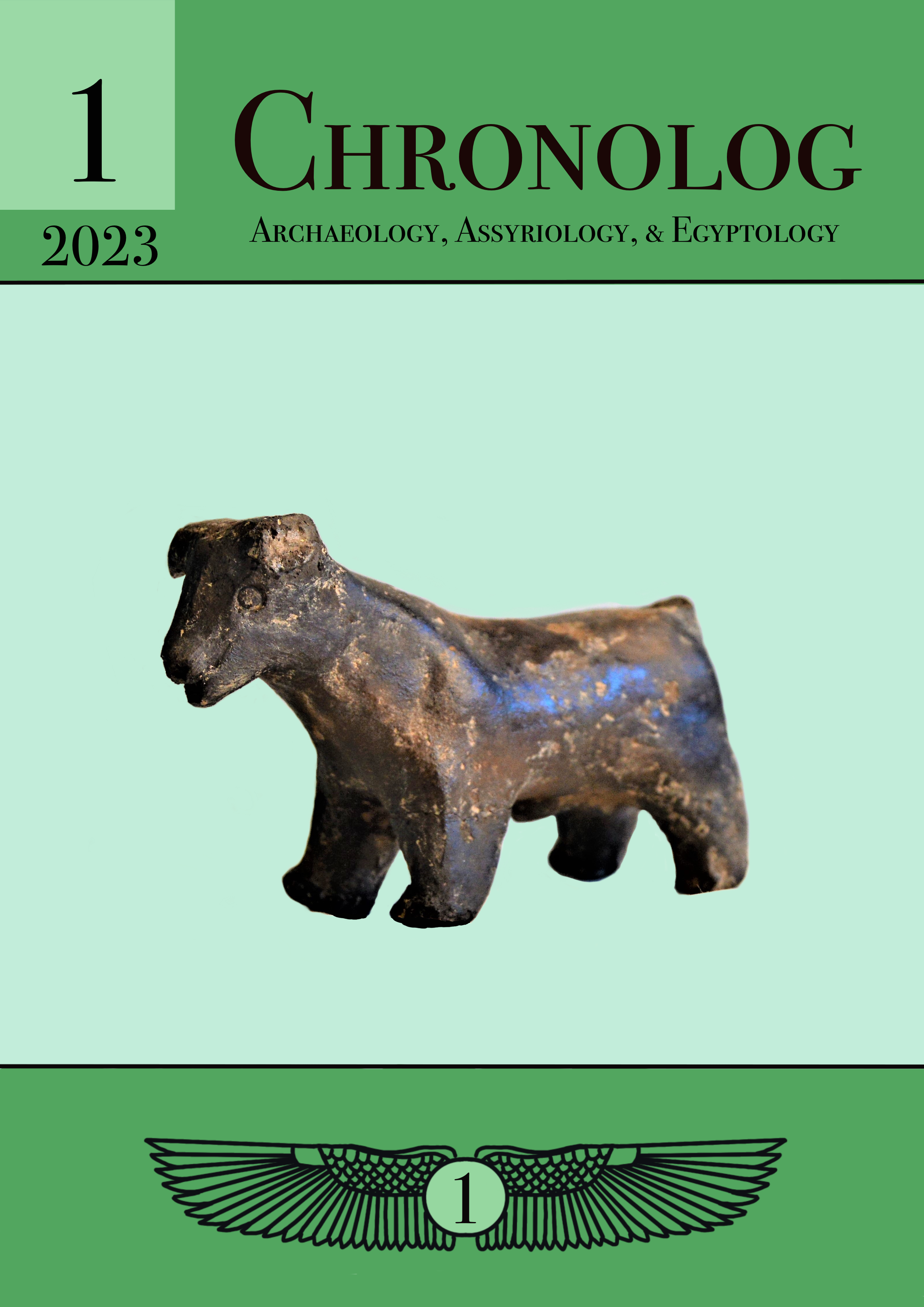Understanding the Conduct During Festivals of Drunkenness
How the Egyptian worldview justified breaking with social conduct norms during religious festivals
Keywords:
Egyptology, Festivals, GoddessAbstract
When studying the proper conduct dictated by ancient Egyptian instructional texts, specifically the Papyrus Insinger teachings, the conduct that is encouraged is starkly different from what was practiced during festivals to the Solar Eye Goddess. This article seeks to compare depictions of the Festivals of Drunkenness with Wisdom Literature which dictate good etiquette. Special focus will be on the how differently the festivals and the instructional texts endorse alcohol consumption, boisterous behaviour, and promiscuity. Finally, an explanation for the differences will be suggested: The reason the Egyptians were willing to defy cultural moral norms on such occasions were ideological – in order to keep the capricious and powerful Solar Eye Goddess at peace, as many people as possible should partake in her favourite activities during her celebration. If she was somehow not satisfied during her festival, it could lead the world into numerous kinds of disasters. Therefore, by taking part in these, otherwise discouraged, acts, every Egyptian was helping keep the world stable.
References
Bibliography
Beatty, Alfred Chester and Gardiner, Allan H. 1931. The Library of A. Chester Beatty. Description of a Hieratic Papyrus with a Mythological Story, Love-Songs. and other Miscellaneous Texts. London: Oxford University Press and Pub. by E. Walker.
Bryan, Betsy M. 2005. “THE TEMPLE OF MUT - New Evidence on Hatshepsut’s Building Activity”, in Hatshepsut from Queen to Pharaoh edited by Roehrig. New York: The Metropolitan Museum of Art.
Bunson, Margaret. 2012. Encyclopedia of Ancient Egypt. New York: Infobase Learning
Darnell, John Coleman. 1995. “Hathor Returns to Medamûd”. Studien Zur Altägyptischen Kultur, vol. 22. Hamburg: Helmut Buske Verlag.
DuQuesne, Terence. 2005. “The Spiritual and the Sexual in Ancient Egypt”. Alessandra Nibi, Discussions in Egyptology 61. Oxford: Oxbow Books.
Godley, A. D. 1920. Herodotus - The Persian Wars: Book 1-2, revised edition. MA: Harvard University Press.
Hornung, Erik. 1997. Der ägyptische Mythos von der Himmelskuh: eine Ätiologie des Unvollkommenen. Freiburg: Universitätsverlag.
Jackson, Lesley. 2018. Sekhmet & Bastet: The Feline Powers of Egypt. London: Avalonia.
Jasnow, Richard and Zauzich, Karl-Theodor. 2017. “Another Praise of the Goddess Ait (O. Sommerhausen 1)”. In Illuminating Osiris - Egyptological Studies in Honor of Mark Smith edited by Richard Jasnow and Ghislaine Widmer. Atlanta: Lockwood Press.
Jensen, Victoria. 2015. “Predynastic precursors to the Festival of Drunkenness: beer, climate change, cow-goddesses, and the ideology of kingship”. In Proceedings of the XI International Congress of Egyptologists edited by Gloria Rosati and Christina M. Guidotti. Oxford: Archaeopress Publishing.
Lexa, François (Frantisek). 1926. Papyrus Insinger: I-II. Paris: Librairie Orientaliste Paul Geuthner France.
Lichtheim, Miriam. 2006. Ancient Egyptian Literature, Volume II: The New Kingdom. University of California Press.
Lichtheim, Miriam. 2006. Ancient Egyptian Literature, Volume III: The Late Period. University of California Press.
Horváth, Zoltán. 2015. “Hathor and her Festivals at Lahun”. In The World of Middle Kingdom Egypt (2000-1550 BC): Contributions on Archaeology, Art, Religion and Other Written Sources - Volume I, edited by Wolfram Grajetzki and Gianluca Miniaci. London: Golden House Publications.
Quack, Joachim Friedrich. 2009. “The animals of the desert and the return of the goddess”. In Desert animals in the eastern Sahara: status, economic significance, and cultural reflection in antiquity, Proceedings of an interdisciplinary ACACIA workshop held at the University of Cologne, December 14-15, 2007, edited by Heiko Riemer. Köln: Heinrich-Barth-Institut.
Richter, Barbara A. 2010. “On the Heels of the Wandering Goddess: The Myth and the Festival at the Temples of the Wadi el-Hallel and Dendera”. In 8. Ägyptologische Tempeltagung: Interconnections between temples, edited by Monika Dolińska and Horst Beinlich. Wiesbaden: Harrassowitz Verlag.
Ryholt, Kim and Quack, Joachim F. 1996. “Fortællinger fra Carsten Niebuhr Instituttets samling af demotisk litteratur”. Papyrus – Ægyptologisk tidsskrift, no. 1, June year 16. København: Dansk Ægyptologisk Selskab.
Simpson, William Kelly and Ritner, Robert K. 2003. The literature of ancient Egypt an anthology of stories, instructions, stelae, autobiographies, and poetry. New Haven, Connecticut: Yale University Press.
Snell, Daniel C. 2020. A Companion to the Ancient Near East. Second edition. Hoboken, New Jersey: Wiley-Blackwell.
Spalinger, Anthon. 2000. “The Destruction of Mankind: A Transitional Literary Text”. Studien Zur Altägyptischen Kultur, vol. 28. Hamburg: Helmut Buske Verlag.
Szpakowska, Kasia. 2003. “Altered states: An inquiry into the possible use of narcotics or alcohol to induce dreams in Pharaonic Egypt”. In A Delta-man in Yebu: Occasional Volume of the Egyptologists’ Electronic Forum No. 1, edited by A. K. Eyma and C. J. Bennett. California: Universal-Publishers.
Downloads
Published
How to Cite
Issue
Section
License
Copyright (c) 2023 Maria Mayland Nielsen

This work is licensed under a Creative Commons Attribution-NonCommercial-NoDerivatives 4.0 International License.
The license terms are under the Creative Commons Attribution-NonCommercial-NoDerivatives 4.0, (CC BY-NC-ND 4.0)
Read more here.


